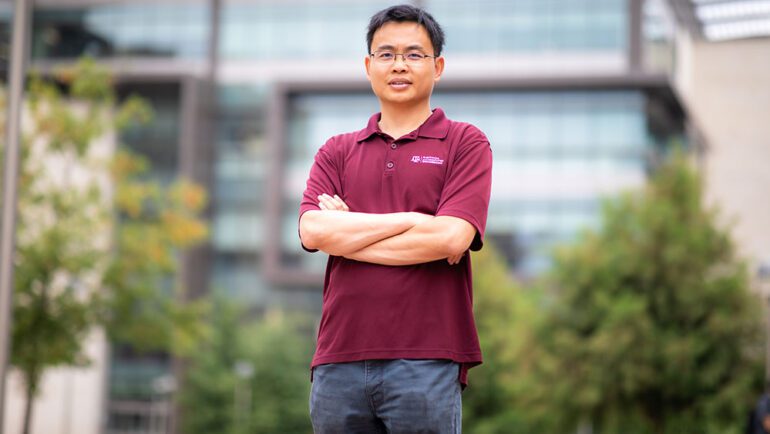TL;DR:
- Dr. Zixiang Xiong, a Texas A&M professor, secures NSF grant for AI-powered data compression research.
- Focus on learned source coding using machine learning to optimize data compression.
- Over 30 years of Xiong’s research culminate in unraveling AI’s theoretical limits.
- Machine learning algorithms for effective data compression and optimal sample sizes are under scrutiny.
- Objectives include enhanced wireless communication efficiency and reduced energy consumption.
- Traditional compression methods contrasted: lossy (JPEG) vs. lossless (Zip).
- Collaboration with Amazon Prime Video lays the groundwork for pioneering project.
- Collaborators include experts from the University of Hawai’i at Mānoa.
Main AI News:
The modern digital landscape is a relentless generator of data, birthing an astonishing 330,000 billion bytes daily, spanning diverse formats such as videos, images, music, gaming, streaming content, and video calls. Yet, amid this data deluge, the imperative to compress becomes paramount – a strategy that conserves storage capacity, accelerates file transfers, and curtails expenses linked to storage hardware and network bandwidth.
Eminent within this realm, Dr. Zixiang Xiong, a distinguished figure and associate department head in the Department of Electrical and Computer Engineering at Texas A&M University, has secured a laudable research grant from the National Science Foundation. The objective of this grant is to delve into the essence of learned source coding, a form of data compression driven by machine learning. With the advent of groundbreaking machine learning techniques, this study stands as a cornerstone to fathom the uncharted depths of the field.
Spanning a career spanning three decades, Xiong has traversed the evolution of data compression since the late 1980s. In the nascent 1990s, transforming an image file into text, only to revert it back to its visual form, was a triumph. Fast forward to the present, the tide has turned; enter machine learning generative models like ChatGPT, capable of crafting fresh content and images by digesting textual inputs. Armed with this formidable AI arsenal, Xiong aims to establish novel benchmarks for this evolving paradigm.
“Before embarking on any engineering venture, the pivotal question is: ‘What are the theoretical constraints?‘” articulated Xiong. The underpinning of this query becomes increasingly vital in the age of AI, where the familiar confines of established theory dissolve, leaving us navigating uncharted waters. The limits of AI’s capabilities remain elusive, prompting a fundamental inquiry into the unknown limits.
The heart of this ambitious venture lies in deciphering the machine learning algorithms that excel in data compression and the volume of samples requisite for mastering this art. This scholarly odyssey holds the promise of unraveling the mysteries of machine-aided data compression, fueling the development of heightened compression techniques. Ultimately, these advancements stand poised to revolutionize wireless communication, culminating in more judicious energy consumption by mobile devices.
Diverse compression methods have etched their mark in history, from the well-acclaimed lossy JPEG compression for smartphone imagery to lossless techniques like Zip compression for files and music streaming. At the nexus of this project, however, emerges the pursuit of defining the bounds within which machine learning thrives for both compression modes.
The year 2020 saw Xiong’s collaborative endeavor with Amazon Prime Video, titled “Deep Learning based Scalable Compression Framework,” laying the groundwork for the ambitious endeavor at hand. Noteworthy collaborators in this venture include Dr. Anders Høst-Madsen and Dr. Narayana Santhanam, esteemed academicians from the University of Hawai’i at Mānoa.
Conclusion:
The strides undertaken by Dr. Zixiang Xiong in the realm of AI-powered data compression hold profound implications for the market. As this research unlocks the uncharted boundaries of machine learning-driven compression, it promises to revolutionize how data is stored, transferred, and consumed. The market stands on the cusp of a new era where information efficiency and optimization take center stage, fostering a landscape characterized by enhanced user experiences, reduced energy consumption, and innovative avenues for data management.

